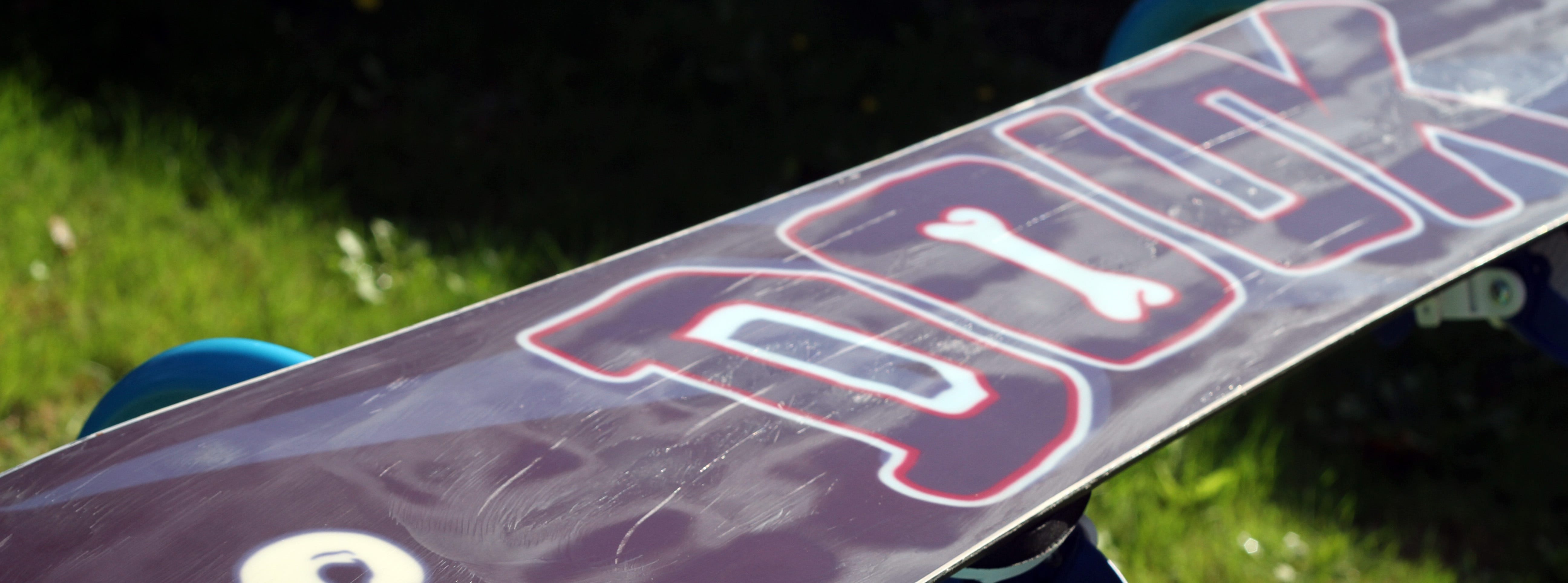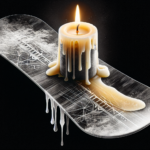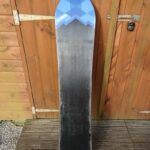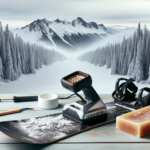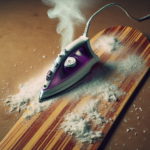If you’re keen on hitting the slopes this season, you’re likely wondering about waxing your snowboard, especially how long it might take. The article “How Long Does Waxing a Snowboard Take?” lays out all the necessary information to give you a detailed outlook on the process. From the prep work required to the actual application of wax and its cure time, we’ll break it all down for you, providing step-by-step guidance, helping you learn how to do it efficiently. This is your all-in-one guide to understanding the time-commitment behind waxing a snowboard, enabling you to fit this important maintenance step seamlessly into your preparations for an exciting snowy adventure!
Understanding the Importance of Waxing a Snowboard
When you’re strapping into your snowboard, ready to carve through crisp pow, the last thing on your mind is probably the wax on your board. But just because it’s invisible doesn’t mean it’s insignificant. Want to glide smoother, go faster, and last longer out on the slopes? This is where wax comes in.
The Role of Wax in Snowboarding
You’re probably wondering, “What does wax have to do with my snowboarding experience?” Turns out, a lot. Wax essentially decreases the friction between your snowboard and the snow. Reducing this friction doesn’t just make you move faster; it also ensures that your snowboard doesn’t stick to the snow, leading to a smoother, more enjoyable ride.
How Wax Impacts a Snowboard’s Performance
Snowboard wax plays a vital role in the board’s overall performance. With a freshly waxed board, you’re likely to feel a noticeable improvement in the way you’re moving on the slopes, especially on flat areas where gravity isn’t pulling you down. Also, wax can extend the lifespan of your board, safeguarding it against the corrosive and abrasive effects of snow.
Different Types of Snowboard Wax
There are several types of snowboard wax available on the market, ranging from all-temperature waxes to temperature-specific waxes, and they all impact how your snowboard interacts with the snow. All-temperature waxes are versatile and functional in any weather, while temperature-specific waxes are optimized for specific conditions, offering excellent performance under those conditions.
Time Expectations for Waxing a Snowboard
Your curious mind may now ask, “How long does waxing a snowboard take?” The answer is, it varies.
Typical Duration in Professional Settings
In a professional setting, getting your snowboard waxed can take between 20 to 30 minutes. Professionals have a wealth of experience in this process, which means they can perform it swiftly and efficiently, saving you time.
Time Commitment for Do-It-Yourself Waxing
While professional waxing is quick and convenient, doing it yourself can also be gratifying though it might take you a bit longer. As a beginner, waxing your own board may take anywhere from 40 minutes to an hour. But with practice, this duration can be significantly reduced.
Steps in Waxing a Snowboard
Here’s something intriguing – waxing your snowboard can actually be a DIY project. Waxing at home not only saves money but also enables you to understand your board better. So, how do you go about it?
Materials Needed for Waxing
You will need a good repair vise to hold your snowboard in place, a waxing iron, your choice of wax, a plastic scraper, a nylon brush, and a buffing pad.
Preparation Procedures
First, secure your snowboard on the repair vise. Then, simply wipe the snowboard base clean to ensure it’s free of dirt and previous wax.
The Waxing Process
Next, melt your wax using the waxing iron and spread it evenly across the length of the base. The goal here is consistency, so you should be systematic in your approach to ensure all areas of the board are covered.
Finishing Touches
Once the wax has cooled off, use the plastic scraper to scrape off any excess wax until the base is as smooth as possible. Then, use the nylon brush to give the base a nice texture before using the buffing pad for a final smooth down.
Factors Influencing the Duration of the Waxing Process
A few factors influence how long the waxing process can take, including the condition of your equipment and your skill level.
Experience Level of the Person Waxing
Just like with any task, the more skillful you are in waxing your snowboard, the faster you’ll complete it. Over time, as you get better at it, you’ll be able to reduce the time spent.
Condition of the Snowboard
Another factor to count on is the condition of your snowboard. A snowboard that’s in good shape will require less intensive preparation and can be waxed more quickly than one that’s been heavily used or poorly maintained.
Type of Wax Used
The type of wax you’re using can also influence the time required. Some waxes are quicker to melt and easier to spread, which can speed up the process.
Tips to Save Time When Waxing a Snowboard
Looking to make the waxing process quicker? Below are few helpful tips to save time.
Proper Scheduling
Schedule your waxing session appropriately. This way, you can ensure that you have all the necessary items ready in advance, which can save time and make the process smoother.
Pre-Waxing Preparations
Your pre-wax prep work can also make a big difference. A well-maintained snowboard requires less time to clean and prepare for waxing, so it’s a good idea to always store your equipment properly.
Post-Waxing Tips
After waxing, it’s essential to thoroughly clean your gear. This way, the next time you decide to wax your board, it’ll take less time since the board will be prepped and ready to go.
Mistakes that Prolong Waxing Time
Some common mistakes can turn your quick waxing session into a prolonged task. Check out what to avoid.
Insufficient Preparation
Skipping the cleaning step or doing a poor job can slow down the waxing process. It’s crucial to start with a clean, dry base before applying the wax.
Using Incorrect Tools
If you don’t use the right tools for the process, you might find waxing to be a tedious, time-consuming task. Ensure that you have a functioning waxing iron, a good scraper, and appropriate brushes.
Patience and Practice
Trying to rush the job can lead to subpar results and can even prolong the process. Remember, the goal isn’t just to get it done quickly but to do it correctly. With practice, and a little bit of patience, you’ll see that you’re getting faster and better at it.
Professional Waxing Vs. DIY Waxing: A Time Comparison
The debate between professional and DIY waxing is really a question of time and convenience versus cost and customization.
Pros and Cons of Professional Waxing
Professional waxing is quick, and it guarantees a quality job. However, it can be costly, and you’ll have to work with the professionals’ schedule, meaning you might not be able to get it done exactly when you want.
Pros and Cons of DIY Waxing
DIY waxing comes with the benefit of time flexibility. Also, it allows you to use the wax you prefer and apply it to areas you think need more attention. However, it might take longer, especially if you’re new to it.
Which Option Saves More Time?
In terms of pure speed, professional waxing usually wins. However, if you consider the time needed to take your snowboard to the shop and pick it up later, DIY waxing could potentially be quicker.
Maintaining Your Snowboard to Minimize Waxing Time
If you’re a regular snowboarder, maintaining your snowboard can make the waxing process quicker and more efficient.
Regular Cleaning and Maintenance Tips
Regularly cleaning your snowboard after each session can help retain its optimal condition, making the waxing process quicker. Also, avoid harsh cleaning agents that could potentially damage the base of your snowboard.
Long-Term Care to Preserve Wax
Wax doesn’t just disappear after one session. With proper care, the effects of waxing can last longer. Be sure to store your board in a cool, dry place after each session.
Exploring Alternatives to Waxing a Snowboard
While waxing is the tried-and-true method for snowboard maintenance, there are alternatives on the market. It’s up to you to determine whether these options are worth your time and money.
Using Wax-Free Products
A few companies offer “wax-free” options to make your snowboard glide more smoothly. These products are usually sprayed onto the base of the board and are reported to last longer than traditional wax.
Advantages and Disadvantages of Wax Alternatives
The advantages of these alternatives include their ease of use, longer-lasting glide and less time-consuming. However, more research is needed to compare the performance of these products to traditional wax.
Optimizing your Snowboarding Experience: Beyond Waxing
While it’s crucial to wax your snowboard properly, it’s also worth noting that there are other maintenance tasks that can help you get the most out of your snowboarding sessions.
Importance of Other Maintenance Tasks
From keeping an eye on the snowboard’s edges and ensuring they stay sharp for better control, to regular checks on your bindings to ensure they’re in good condition, ongoing maintenance is as crucial as waxing for an optimal ride.
Balancing Speed and Safety in Snowboarding
Waxing improves the speed, but remember to always prioritize safety. Knowing that you can maintain your snowboard yourself should provide you a greater understanding of its condition and boost your safety while on the slope.
Overall Impact of Proper Maintenance on Snowboarding Experience
Proper maintenance, including regular waxing, will not only enhance your performance but also prolong your snowboard’s lifespan. This way, you are sure to get the best snowboarding experience possible.
So, now you know, waxing your snowboard is an essential aspect of snowboarding maintenance. It might seem like a daunting task at first, but with practice and patience, you’ll find that it’s definitely worth the effort. Remember, what you get is not just a faster, smoother ride, but also a board that’s bound to serve you longer. So, why not give it a try? Choose the right wax, get your gear ready and happy waxing!
- What Snowboard Bindings Should I Get? - January 23, 2024
- What Size Screws For Snowboard Bindings? - January 23, 2024
- How To Snowmobile On Water? - January 23, 2024

